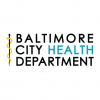Baltimore City Health Department Statement On E-Cigarette Council Bill
Friday May 16th, 2014
Baltimore City Health Department Statement On E-Cigarette Council Bill
BALTIMORE, MD (May 1, 2014) — The Baltimore City Health Department looks forward to working with the City Council on this important legislation extending the prohibition of indoor smoking to include e-cigarettes.
“We are concerned about the increasing frequency of vaping and e-cigarette use among school-aged children and that this may be a gateway device for smoking traditional cigarettes and developing nicotine addiction,” said Dr. Jacquelyn Duval-Harvey, Interim Health Commissioner for Baltimore City. “We know that a strong majority of adult smokers become addicted to tobacco by the time they finish high school, so school-aged children who use tobacco or e-cigarettes is cause for concern. Additionally, with e-cigarettes, the cheaper cost, easier access, clever nicknames for devices, bright colors, and flavored varieties appealing to young people are all troubling. We are concerned that teenagers will see e-cigarettes as a trendy, harmless “in” thing to do.”
If passed, Baltimore would join such other major cities as Boston, Chicago, Los Angeles, New York City, Philadelphia, San Francisco and Seattle which have already banned e-cigarettes in places where cigarettes aren’t allowed.
Similar to traditional cigarettes, e-cigarettes contain nicotine in their cartridges, an addictive chemical that poses risks to heart health.
Earlier this month, a study by the Centers for Disease Control found a dramatic increase in calls to poison centers for issues dealing with e-cigarettes – from one per month in September 2010 to 215 per month in February 2014. More than half of the calls involved young children under age five and about 42 percent of the calls involved people age 20 and older.
According to another recent report from the CDC, from 2011 to 2012 electronic cigarette use increased significantly among middle school (0.6 percent to 1.1 percent) and high school (1.5 percent to 2.8 percent) students.
According to the Centers for Disease Control, nearly 90 percent of adult smokers in the United States began smoking by age 18. The 2012 National Youth Tobacco Survey (NYTS) found that in 2012, the prevalence of current tobacco product use among middle and high school students was 6.7 percent and 23.3 percent, respectively. After cigarettes, cigars were the second most commonly used tobacco product, with prevalence of use at 2.8 percent and 12.6 percent, respectively.
The life-changing impacts of tobacco use on health are clear:
- Tobacco use is the number one preventable cause of heart disease and is a major contributor to heart attacks, stroke, chronic lung disease and cancer.
- Cardiovascular disease (CVD) is the leading cause of death in Baltimore City, and smoking is one of the major risk factors for developing CVD.
- Babies exposed to tobacco smoke are five times more likely to die from Sudden Infant Death Syndrome.
- Those who smoke and have chronic illnesses are more likely to have poorer health outcomes than those who do not smoke.
Tobacco use is an issue that directly impacts several goals outlined in the city’s health policy agenda, Healthy Baltimore 2015:
Decrease the percent of adults who currently smoke by 20 percent.
- In 2011, nearly 25 percent of Baltimore City residents self-reported in a survey that they were a smoker. Baltimore City has consistently had a higher smoking prevalence than the state of Maryland.
Reduce the percent of teens who currently smoke by 20 percent.
- In 2007, nearly 12 percent of high school students reported they had smoked tobacco products at least once in the previous month. A 2010 study of tobacco use behaviors showed use of “any” tobacco product by youth under age 18 had increased nearly three percent between 2000 and 2010.
Decrease by 15 percent the rate of births to women who report smoking during pregnancy.
- Between 2009 and 2011, the rates of smoking during pregnancy increased, particularly among African American women, an increase of 20.5 percent.
